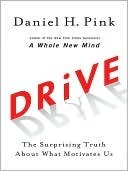approach, which he called Theory X, assumed that people avoid effort, work only for money and security, and therefore need to be controlled. The second, which he called Theory Y, assumed that work is as natural for human beings as play or rest, that initiative and creativity are widespread, and that if people are committed to a goal, they will actually seek responsibility. Theory Y, he argued, was the more accurate—and ultimately more effective—approach.
Welcome back. Just a moment while we sign you in to your Goodreads account.


